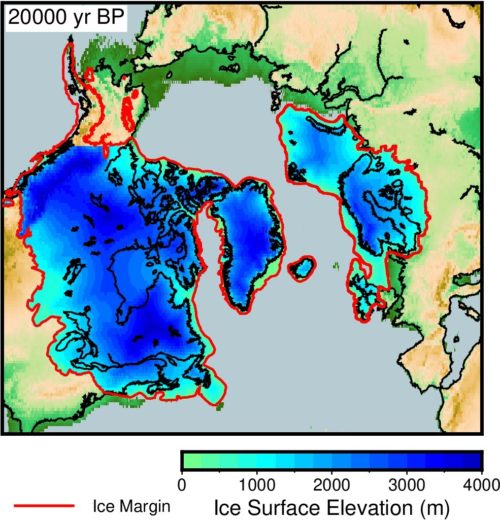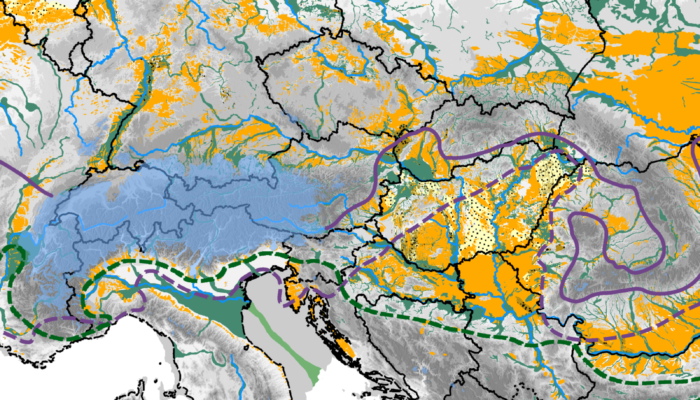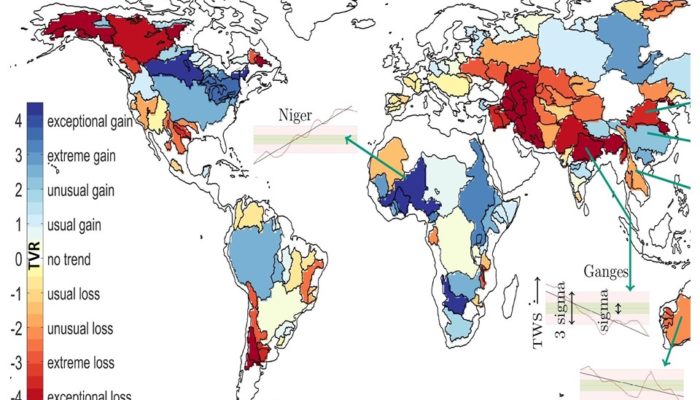Loess is a silt-sized, aeolian sediment that was produced in large quantities in past geological eras of mid-latitude Europe and Asia, among others (Fig. 1). It is used in Quaternary science to infer about past climatic and environmental conditions. Generally, layers of loess formed during cold and dry periods, while soils formed within/on top the loess during warmer and wetter periods. These soil ...[Read More]
Reconstructing ice sheets and topography of the past

One of the most profound consequences of past climate changes are the geologically rapid (<100,000 year) changes in global topography. For thousands of years, large ice sheets, similar to what currently exists in Greenland and Antarctica, waxed and waned on North America and Europe. Only 20,000 years ago, if you were sitting in the middle of Canada or Sweden, you would be under thousands ...[Read More]
New metric to interpret linear trends from short time series: Trend to variability ratio (TVR)
Availability of good quality data is essential to deduce meaningful information in all disciplines of science and technology. This statement is especially relevant in climate research, which is under constant scrutiny from sceptics. In order to better understand the Earth system response to the ongoing anthropogenic global warming, we require global observations of climate indicators at ver ...[Read More]
Life of a Climate scientist presents Holly Kyeore Han
About the blog series: Life of a Climate scientist Life of a Climate Scientist is a new blog series started by the EGU Climate Division. The main focus of this series is to provide a platform for climate scientists to tell their stories of life in research. We will be covering a wide-range of subjects, from their scientific endeavors and maintaining work-life balance to challenges they have faced ...[Read More]



